
|   |

|   |
 e-mail: sunilkothari1933@gmail.com Nrityagram Ensemble puts best foot forward Photos: Ravi Shankar August 27, 2019 In memory of Protima Bedi on her death anniversary on 18th August, for past 21 years Nrityagram dancers present performances showcasing the continuous progress they have been making in the sylvan setting at the now internationally renowned dance village, Nrityagram. This year, the program was held at Ambedkar Auditorium, Bangalore. Surupa Sen and Bijayini Satpathy had received special training in Natyashastra under Dr Padma Subrahmanyam, learning various aspects of movements mentioned in Natyashastra. The charis, movements on floor known as 'Bhu Charis' was the opening number involving dancers from the age group of 5 to 10, all dressed up in colourful costumes, entering stage in two rows and taking positions covering the space in a disciplined manner. 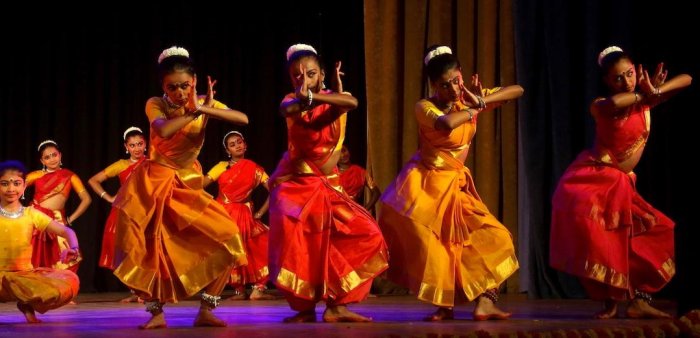 Natyashastra 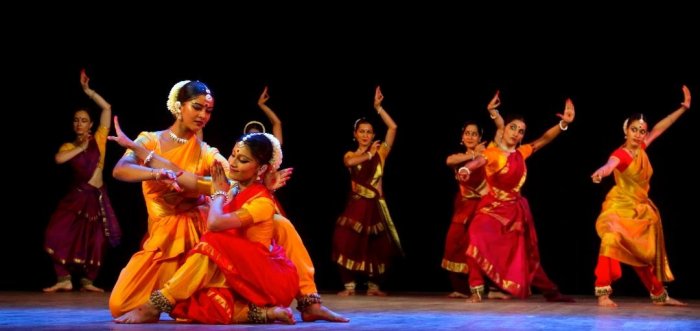 Sankirtanam And to the melodious recitation of Sanskrit text they unfolded the movements with confidence and joy. Beginning with Samapada, with balance equal on both feet, they moved to Sthitavarta, Shakatasya, Chashgati, Janita, Spandita, Mattali and several other movements, revealing their command over the technique. And what a variety of movements on floor were performed as per the instructions given in Natyashastra! Their cherubic smiles and graceful movements won over the audience who hailed them warmly. Some of them study as an outreach programme, coming as they do from nearby villages and some from the city on Sundays. The basic fundamental movements prepare them for advanced technique and that too from childhood, offers them a sound foundation. I have been lucky as I visit Nrityagram for a few days in advance and get an opportunity to watch the rehearsals. Surupa conducts it at the Amphitheatre watching from distance. Her watchful eyes notice carefully the movements which have to synchronize, align and have to be perfect in execution. As a choreographer, she deals with translation of movements she has visualized over a long period. The musicians follow her instructions in terms of textures of mnemonic syllables and singing that enhances the mood. That legendary musician and singer, late Raghunath Panigrahi has bequeathed to Surupa Sen such excellent music. 'Sankirtanam' composed by Raghunath has a hauntingly melodious quality. Surupa has choreographed it in an imaginative manner creating a devotional mood in a temple. The dancers appear to the beat of drums and spoken ukutas, mnemonic syllables. Their perfect basic Odissi stance of chowka immediately draws our attention. The prayer in praise of Jagannath with refrain of 'Jagannatha Hare' starts resonating in the auditorium. His iconic form takes shape before our very eyes. Shankha gadadhar, wielding conch and a mace; Nilakalevar, dark skinned; Chandancharchita, besmeared with sandal paste; Pankajalochan, lotus eyed; Bankim sundar, beautiful with lovely curve; Manasmohan, stealing one's senses; and then his wonderful deeds of subjugating serpent Kaliya, Kaliyamardana; and one who is a decoration of Gokul, Gokul Bhushan. The dancers form groups like a tableau showing subjugation of Kaliya; Dukhabhanjan, remover of unhappiness; then some playing drums, some playing cymbals, some swaying in ecstasy, dancing joyously spreading waves of devotion. Surupa's choreography is eye catching. The spaces are earmarked well and weaving in and out of dancers appears flawless and engaging. 'Sthayi' choreographed by Adi Guru Pankaj Charan Das and restaged by Surupa with ukutas sung in pleasant manner 'tak dha dha kad tak tam thai thai', dancers in chowka taking also bhramaris (circles), with arms in extended horizontal position, some in sitting position, some standing, playing drum, placing ornaments, looking into mirror (Darpani), playing cymbals, flute, veena creating orchestra which one sees in sculptures upon the parapet of Konark temple, come alive. 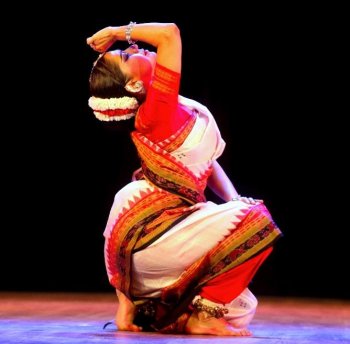
Surupa Sen in 'Se Nato Nagara' 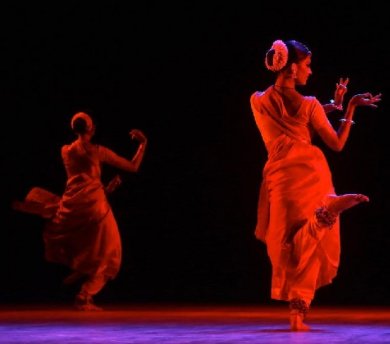
Sankarabharanam Pallavi Sankarabharanam Pallavi of Pankaj Charan Das restaged had images of dancers holding lamp (Deepdharini), looking into mirror (Darpani), Surupa placing three dancers in one cluster, one at a distance and performing in unison. The broad movements of arms, bodies bending taking circles, rising and moving to solfa, the hastas rising with the ascending notes were performed with ease and in effortless manner. The finale choreographed by Surupa to recitation of ukutas minus melody and sahitya, the text of the song, was a creative piece titled 'Aarti', offering with lamp. The four dancers Dhruvatara, Prithvi, Urmila and Pavithra Reddy with their sound technique lit up the dance, dancing before Lord Jagannatha, images of the Lord being driven in a chariot, the movement of the image of Jagannatha swaying forward and backward in what is known as Pahandi chaal, were arresting. This number is an extension of the boundaries of Odissi as it has a novel approach in terms of music. The four dancers seen in array in a diagonal, with one leg raised and they all in rock steady position with light bend of the torso, other arm extended backward, was a visual which is etched in my inner eye. One dancer in the centre stands with arms spread as Lord Jagannatha and other three offer pranam. Then they raise their arms clapping and move towards wing including one who plays role of Jagannatha and lights slowly fade as they disappear like shadows in a dream. 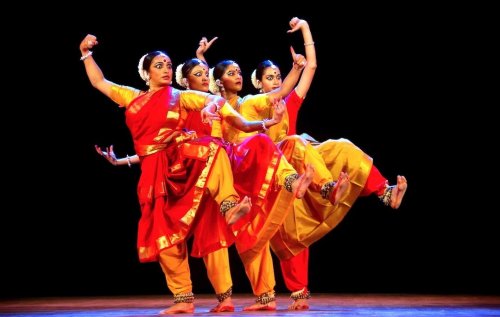 Aarti Rohan Dahale (mardala, khol), Jatin Sahoo (vocal), Shiva (violin) and Manuraj Rajput and Bhuvan (flute) were at their best supporting dance as a team of musicians. Non obtrusive but accompanying with understanding to enhance the dance, they deserve special mention. And what can one say about the lighting by that ace light designer Lynne Fernandez, who using pastel color shades painted the ensemble in subdued hues, lighting up dramatically when necessary, contributing to the visuals and performances with unerring eye highlighting the presentation which leaves indelible impression. Nrityagram dancers have over the years acquired what one can call 'Nrityagram bani', a distinct style that sets them apart. As Protima used to say, "We are celebrating a place where nothing exists, except dance." And how true it is! After 29 years, her Nrityagram, has achieved a class and the dancers display excellent dance where the style is chiseled like a many faceted diamond. And what a pleasure it was to learn that Surupa Sen has been awarded Sangeet Natak Akademi award for Odissi for the year 2018. A tribute to Nrityagram, its founder Protima Bedi and Surupa's dedication for past more than thirty years for preservation and propagation of Odissi dance extending its boundaries within the tradition.  Dr. Sunil Kothari is a dance historian, scholar, author and critic, Padma Shri awardee and fellow, Sangeet Natak Akademi. Dance Critics' Association, New York, has honoured him with Lifetime Achievement award. Post your comments Please provide your name and email id when you use the Anonymous profile in the blog to post a comment. All appropriate comments posted with name & email id in the blog will also be featured in the site. |